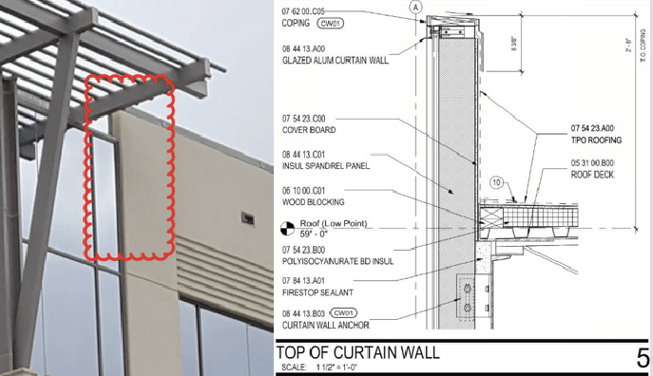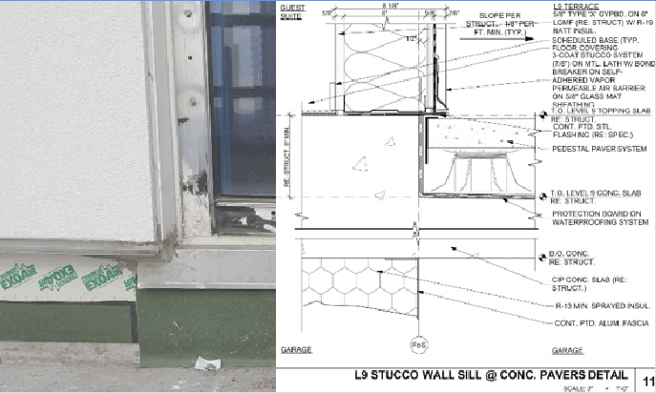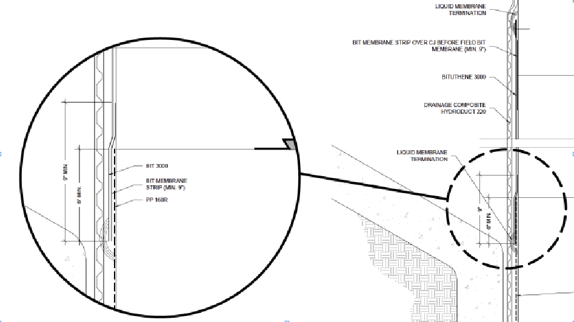Why We Continue to Have the Same Recurring Problems
I have been very lucky in my life to have moved through several different professional careers beginning as a proud Auburn (War Eagle!) Mechanical Engineer in the commercial nuclear power industry supporting the startup and operation of various air containment and treatment systems. After 15 years I moved into commercial construction with a specialty noise control subcontractor and then with a roofing and waterproofing subcontractor. Another 15 years passed, and I moved back into the engineering world as a building enclosure consultant. This work history in both design and construction of enclosures allows a unique perspective for explaining recurring issues associated with building enclosures.
Watching building enclosure presentations at conferences across the country, one notices a focus on very similar problems. Owners, designers, contractors and manufacturers generally agree that transitions, terminations and penetrations are where most of enclosure problems occur. Problems with the building enclosure reportedly account for between 60 to 80 percent of all construction litigation. These problems are typically identified as water intrusion through the building enclosure and are rarely identified as air leakage or energy losses. One of the most prevalent recurring building enclosure problems occur at the roof to wall transitions.
Here are just a few examples of typical conditions that have complex transitions between different systems and materials. This results in layering of materials from different manufacturers installed by different contractors at various times during the construction sequence.
 |
| An example of typical conditions that have complex transitions between different systems and materials. This results in layering of materials from different manufacturers installed by different contractors at various times during the construction sequence. This shows the transitions from curtain wall to concrete tilt panel and single-ply roofing membrane. |
 |
| Another example of typical conditions that have complex transitions between elevated deck waterproofing, curtain wall and stucco wall cladding. |
Is it reasonable to expect the field foremen from 6-8 subcontractors and the general contractor to figure out the best method to install an air and watertight barrier at these intersections?
The building enclosure is very complex. Think of the building enclosure as a system. Just like the HVAC, electrical power, lighting or plumbing systems. The building enclosure is one of the most complex systems and provides several barrier functions that can be thought of as continuous control layers that limit the movement of bulk water, water vapor, air, heat, light and noise.
In simple geometric terms the building enclosure can be simplified to a six-sided box with four walls, a top and a bottom. In reality, the world is much more complicated. Most building enclosures are comprised of a variety of different subsystems. These subsystems are comprised of individual components in various configurations produced by a variety of manufacturers and installed by several different subcontractors. The majority of building enclosure problems occur at the transition between these different components.
The typical design, bid, build process used for projects does not lend itself to quality, efficiency or value as it relates to the building enclosure. In simple terms, contributors to this process can be grouped into four basic categories that are owner/developers, designers, contractors and manufacturers. In reality, contributors become much more numerous and tend to have conflicting goals and incentives that are not always focused on the ultimate quality of the building.
Owners have a set of requirements that designers transform into a set of construction documents. As financing has become more complex and difficult, a focus on reducing construction cost and schedule tend to trump other factors when making value decisions for the building enclosure. Often an owner’s financial model does not assume the owner retains the building long term resulting in value decisions being made for a relatively short life expectancy of buildings.
Designers receive minimal education regarding options and detailing of the building enclosure. Many designers view the building enclosure as a large risk for errors and omissions and tend to push detailing down to the contractor or manufacturer. This is where we all have seen the gray area between design detailing by the designer and means and methods of the contractor.
Contractors also receive minimal education regarding the building enclosure and recognize (many times from painful litigation) that the building enclosure is a large liability. They attempt to push this liability and detailing responsibility down contractually to the installing subcontractor and to the manufacturer.
Subcontractors have the most potential to impact the quality of the building enclosure. Ultimately their application of materials in a manner that is consistent with the designer’s intent is what really matters. Subcontractors are the contributors that must understand the required detailing, material limitations, proper sequencing and exposure limitations. Unfortunately, the subcontractor is one of the last to be involved in a project and is pushed to perform with the least paid participants on an expedited schedule.
 |
| This detail shows the transition from below-grade waterproofing to above-grade waterproofing with a minimum requirement of a six-inch overlap. |
Manufacturers have continued to respond to the industry’s needs by developing new high-performance systems that are more demanding of the installing contractor with more restrictions and tighter tolerances that result in less forgiving installation requirements. Manufacturers have also become more creative with warranties that extend their traditional system boundaries and demand their systems be installed by certified contractors. Many times, this results in contractors extending their installation from the framing/sheathing and exposed cladding systems to include the air, water and/or thermal layers.
So, how do we overcome the conflicting incentives of the many contributors? Find participants dedicated to the building enclosure that are removed from the financial and schedule pressures impacting the individual contributors. Professional organizations that independently review and certify materials and contractors can be one source. For instance, the Air Barrier Association of America (ABAA). ABAA independently evaluates building enclosure barrier systems and provides training and certification to contractors for their installation. Another source may be independent building enclosure consultants that provide oversight to the entire process. This quality assurance process is now often referred to as Building Enclosure Commissioning or BECx. Building enclosure consultants have the ability to influence all of the contributors previously mentioned and can participate from the initial programming discussions to the final testing that confirms the performance of the completed building enclosure.

By John Posenecker
Senior Associate, Department Manager - Facilities Engineering
Building Exterior Solutions, A Terracon Company
Check out similar guest columns in Chamberlin's newsletter.
Subscribe Today!
Stay-in-the-know and subscribe to our blog today!